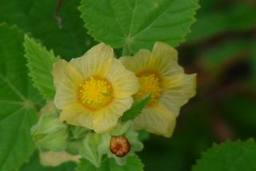| PlantID | 0096 |
| Botanical Name | Sida cordifolia |
| Common Name | Bala |
| Classification | | Kingdom: | Plantae | | Subkingdom: | Tracheobionta | | Division: | Magnoliophyta | | Class: | Magnoliopsida | | Subclass: | Rosidae | | Order: | Malvales | | Family: | Malvaceae | | Genus: | Sida | | Species: | cordifolia |
|
| Part used | Whole plant, Seeds, Leaves and Root. |
| Medicinal Properties | Aphrodisiac, febrifuge, astringent, diuretic and tonic |
| Medicinal Use | Whole plant: juice mixed with water beneficial in spermatorrhoea; Seeds: useful in colic, tenesmus and gonorrhoea; Leaves: useful in nervous and urinary diseases, cystitis, strangury, bleeding piles, haematuria, chronic dysentery, leucorrhoea and in asthma as cardiac tonic; Root: juice is used for healing of the wound; Bark: effective in curing facial paralysis and sciatica. Also useful in opthalmia, rheumatism, shivering fits and improves sexual strength. |
| Chemistry | Alkaloid, ephedrine, hypaphorine, vasicinone, vascicine, choline, betaine, phytosterol and resin acids. Seeds: proteins, linoleic, malvalic and sterculic acids. |
| Cultivation | NA |
| Regional Habitat | Grows wild along the roadsides, throughout sub-tropical and tropical area of Rajasthan. |
| Description | A small downy erect herb or shrub, 1.5m in height, with long branches, sometimes rooting at nodes. Leaves: cordate, oblong, ovate or ovate-oblong, very downy on both surfaces; Flowers: small, tawny-yellow or white, carples 10; Fruits with a pair of awns on each carple. |
| Image |  |


